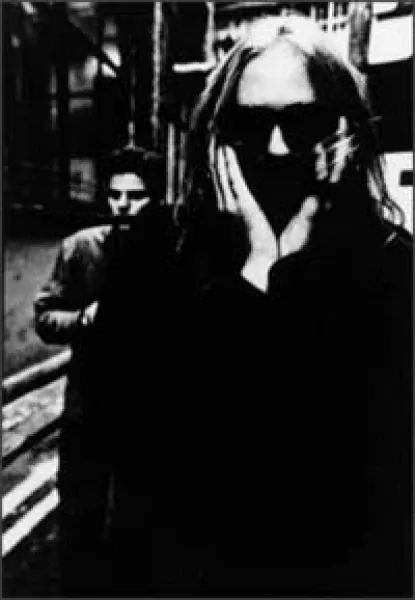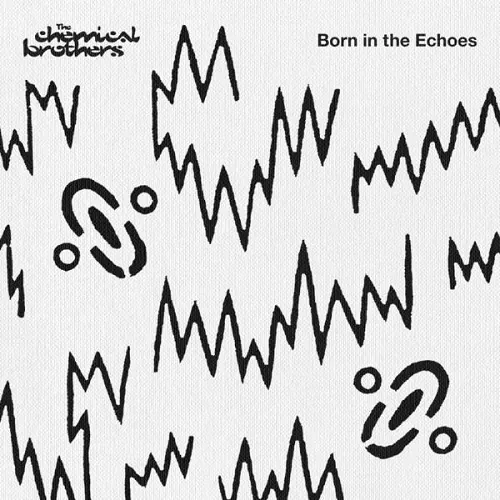
The Chemical Brothers
Top The Chemical Brothers albums
Top The Chemical Brothers lyrics
A Modern Midnight Conversation
The Chemical BrothersBack With Another One Of Those Block Rockin' Beats
The Chemical BrothersThe Chemical Brothers biography
The act with the first arena-sized sound in the electronica movement, the Chemical Brothers united such varying influences as Public Enemy, Cabaret Voltaire, and My Bloody Valentine to create a dance-rock-rap fusion which rivalled the best old-school DJs on their own terms -- keeping a crowd of people on the floor by working through any number of groove-oriented styles featuring unmissable samples, from familiar guitar riffs to vocal tags to various sound effects. And when the duo (Tom Rowlands and Ed Simons) decided to supplement their DJ careers by turning their bedrooms into recording studios, they pioneered a style of music (later termed big beat) remarkable for its lack of energy loss from the dancefloor to the radio. Chemical Brothers albums were less collections of songs and more hourlong journeys, chock full of deep bomb-studded beats, percussive breakdowns, and effects borrowed from a host of sources. All in all, the duo proved one of the few exceptions to the rule that intelligent dance music could never be bombastic or truly satisfying to the seasoned rock fan; it's hardly surprising that they were one of the few dance acts to enjoy simultaneous success in the British/American mainstream and in critical quarters.br /br /While growing up, both Rowlands and Simons grooved to an eccentric musical diet, ranging from the Smiths and Jesus and Mary Chain to Kraftwerk and Public Enemy. They met while taking the same history course at Manchester University, though neither were native Mancunians -- Rowlands enrolled because of the legendary Hacienda nightclub nearby, while Simons acknowledged the city as birthplace to the Smiths and New Order. The pair began sampling Madchester's vibrant nightclub scene together during 1989 and 1990, just at the peak of Britain's fascination with a DJing style named Balearic. Pioneered at the island hot spot of Ibiza during the mid-'80s, Balearic relied on a blend of early house music, Italian disco, rare-groove jazz and funk, Northern soul, hip-hop, and alternative dance. Original Balearic DJs like Trevor Fung, Paul Oakenfold, and Mike Pickering brought the sound back to indie clubs in London and Manchester, and the style proved very attractive to musical eclectics like Rowlands and Simons.br /br /Though Rowlands was already performing in the alternative dance group Ariel, the pair began DJing together at the Manchester club Naked Under Leather in 1991. Hardly believing that their weekend project would progress, they took the semiserious handle Dust Brothers (a tribute to the American production team responsible for one of their favorite albums, the Beastie Boys' Paul's Boutique). Despite their doubts, Rowlands and Simons' club night did grow more popular, thanks to the duo's Balearic mix of rare house tracks flavored with hip-hop breakdowns, independent-dance fusions, and ancient secondhand discards. After deciding to try and re-create their unique sound in their tiny bedroom studio, the Dust Brothers emerged with "Song to the Siren," an intriguing example of the new alternative dance scene including sample victims Meat Beat Manifesto and This Mortal Coil.br /br /After the single was pressed up on a limited release of 500 copies, it began getting attention from Britain's top DJs, initially including an old friend named Justin Robertson but later including Andrew Weatherall and Darren Emerson. Weatherall licensed the single to Junior Boy's Own Records, and after the pair had finished university, they moved back to London to work on another EP (14th Century Sky) and a residency at another club. After their third release, "My Mercury Mouth," the duo began to get more high-profile clients for remixing: besides Justin Roberston's Lionrock collective, Primal Scream, the Prodigy, and the Charlatans all received treatments.br /br /When lawyers for the original Dust Brothers came calling in 1995, though, Rowlands and Simons were forced to change to change their name to the Chemical Brothers (the proposed Dust Brothers U.K. was turned down). Word on the street and nightclub scene was so good that it hardly mattered; their new residency at the Heavenly Sunday Social quickly became one of the hottest clubnights in England -- documented on the mix disc Live at the Social, Vol. 1 -- and their debut album, Exit Planet Dust, was heavily praised by critics. Another fan of the record, Oasis frontman Noel Gallagher, agreed to lend his vocals to a future single named "Setting Sun," the Chemicals' tribute to one of their own favorites, the Beatles' "Tomorrow Never Knows." The single went to number one in late 1996, and the Chemical Brothers opened up for the giant Oasis concert at Knebworth besides headlining their own shows all over the world.br /br /The Chemical Brothers' second album, Dig Your Own Hole, took charge of the top spot on the album charts upon its release in April 1997, and on the wings of America's growing electronica push, the album sailed to number 14 stateside and went gold. The duo released a mix album in 1998, Brothers Gonna Work It Out, and followed with their third studio LP, Surrender, in 1999. Rather lackluster expectations sparked a return to the underground with the white-label-only single "It Began in Afrika," and the duo's fourth album, Come With Us. It too failed to earn the high notices of the first two albums, although after another three-year gap Rowlands and Simons returned with an improvement, 2005's Push the Button. ~ John Bush, All Music Guide

